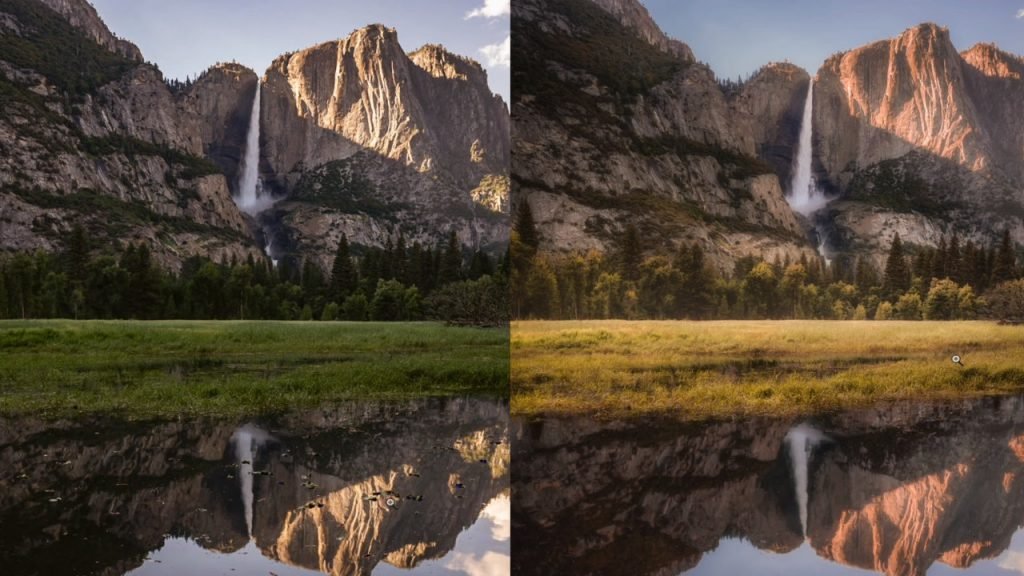Editing landscape photography plays a vital role in bringing out the true beauty of nature captured through the lens. While capturing stunning landscapes is a skill in itself, the editing process can elevate the final result to new heights. In this blog, we will explore 10 essential tips that will help you enhance your landscape photography through effective editing techniques. Whether you’re a beginner or an experienced photographer, these tips will provide valuable insights to take your editing skills to the next level.
1. Start with a Solid Foundation
Before diving into the editing process, it’s crucial to ensure that you have a well-exposed and properly composed photograph. Pay attention to the exposure settings, white balance, and framing while capturing the image. A well-exposed photo will provide more flexibility during the editing process and make it easier to achieve the desired results.
2. Use RAW Format
Shooting in RAW format gives you the advantage of capturing a higher level of detail and a wider dynamic range. RAW files contain more information compared to JPEGs, allowing for more flexibility in post-processing. This extra data will help you recover highlights and shadows, resulting in a more balanced and visually appealing image.
You may like: How to Use Camera+ for Better Social Media Profiles
3. Enhance Colors with Selective Adjustments
To make your landscape photos pop, use selective adjustments to enhance the colors. Instead of applying global adjustments to the entire image, target specific areas that need improvement. Use tools like the adjustment brush or radial filter to selectively adjust saturation, vibrance, and hue, giving your landscape a natural and vibrant look.
4. Utilize Graduated Filters for Balanced Exposures
When capturing landscapes, it’s common to encounter a wide dynamic range between the sky and the foreground. Using graduated filters during editing can help balance out these exposures. Graduated filters allow you to darken the sky or lighten the foreground, creating a more evenly exposed image. Experiment with different filter strengths to achieve the desired effect.
5. Apply Lens Corrections
Lenses often introduce distortions and aberrations that can negatively impact the final image. Most editing software provides lens correction tools that can automatically fix these issues. Apply lens corrections to correct distortions, chromatic aberration, and vignetting, resulting in a cleaner and more professional-looking image.
You may like: Top 10 Features of Facetune
6. Fine-tune the Composition
During the editing process, take the opportunity to fine-tune the composition of your landscape photo. Crop the image to remove distracting elements or to create a more balanced composition. Experiment with different cropping ratios to find the one that best suits your image and enhances its overall impact.
7. Pay Attention to Details
Landscape photos often contain intricate details that can make a significant difference when properly highlighted. Use sharpening tools to bring out the fine details, but be careful not to overdo it, as excessive sharpening can create unwanted artifacts. Additionally, pay attention to noise reduction to maintain the image’s clarity while reducing any digital noise.
8. Experiment with Different Presets
Editing presets can be a great starting point for your landscape photography edits. Presets provide pre-determined settings that can instantly transform your image with a single click. Experiment with different presets to find the one that best suits your desired style and mood. From vibrant and bold to soft and ethereal, presets offer endless possibilities for your landscape photography edits.
You may like: Google’s Pixel Magic Editor App Enhancements: Prioritizing User Safety and Legal Compliance
9. Create a Balanced Final Image
While editing, strive for a balanced final image that showcases the beauty of the landscape. Pay attention to the overall tonal balance and ensure that no elements overpower the others. Maintain a harmony between the shadows, midtones, and highlights, creating a visually appealing and well-balanced composition.
10. Don’t Overlook the Importance of Post-Crop Vignetting
Post-crop vignetting can add a subtle finishing touch to your landscape photos. It helps draw the viewer’s attention towards the center of the image and creates a sense of depth. Experiment with different vignetting settings to find the right balance, ensuring that it enhances the overall composition without overpowering the image.
Conclusion
Editing landscape photography is an art form that requires skill, creativity, and attention to detail. By following these 10 must-know tips, you’ll be able to enhance your landscape photos and create stunning visuals that mesmerize viewers. Remember, editing is about personal expression, so don’t be afraid to experiment and develop your own unique style. With practice and patience, you’ll master the art of editing landscape photography and produce images that truly capture the beauty of the natural world.
Recommended by editor:
